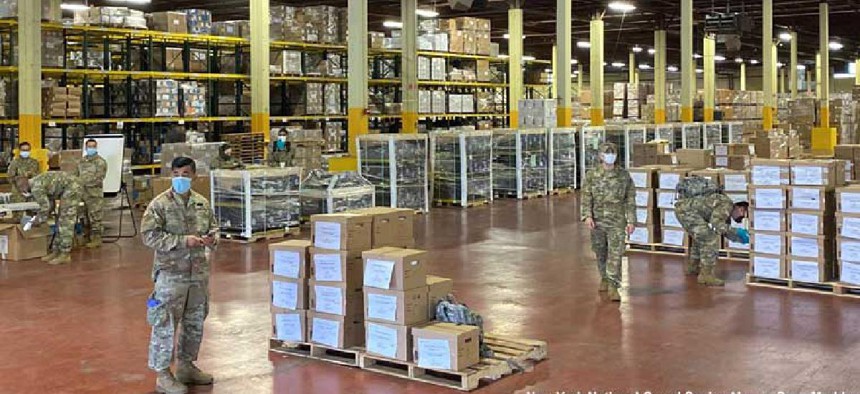How COVID-19 is driving the military’s move to mobile RFID
The need to securely track assets of a mobile workforce during the COVID-19 pandemic has made a clear case for the military to adopt mobile RFID.
Many military personnel and government workers at naval shipyards, airbases and other military sites became mobile workers during the COVID-19 pandemic. As conditions change and employees adopt hybrid schedules, the continual movement of people and technology assets entering and exiting government buildings each day is greatly increasing the number of assets to securely track – beyond even the extensive inventory tracking that already exists on military bases.
At the same time, radio-frequency identification technology for asset and inventory management has been steadily replacing inefficient and time-consuming manual processes to save time, automate the identification of objects, capture data and increase data accuracy. RFID technology is a wireless, non-contact use of electromagnetic fields for identifying and tracking tags attached to objects. RFID tags can be read without line-of-sight and up to 30 feet away using ultra-high-frequency RFID. In addition, there are now RFID-enabled mobile devices that leverage the Microsoft Windows 10 operating system, which powers secure data capture, transmission and asset tagging. These mobile RFID solutions can drastically reduce the time required to inventory assets and are more versatile than fixed RFID portals.
Mobile workers
Prior to the COVID-19 pandemic, many military employees worked on-site, so it was easy for them to input their credentials and use whatever office equipment was required. But because of pandemic work-from-home mandates, laptops, tablets and portable printers took the place of desktop computing equipment. As a result, military and civilian personnel began transporting these assets between home and onsite work locations.
Consequently, there are more assets to track than when users are on-site -- which is a perfect use case for mobile RFID. Asset managers can simply point mobile RFID readers at specific areas within an office, warehouse or shipyard, see all the assets that are there, then validate them against a list of who should have what and resolve any discrepancies.
Portable precision
RFID readers have traditionally been fixed units placed near the entrance and/or exit of a government building, military base or shipyard to keep track of assets as they came and went. However, having readers at entrances and exits does not enable asset management inside a warehouse or within a certain area. For example, it is critical to ensure the same part that gets renovated for an aircraft, tank or submarine goes back to its original place. Or if a part is replaced, it’s important that the asset designated to replace it is actually used. Mobile RFID units can be invaluable in cases where it’s necessary to track the exact location of an RFID-tagged asset within a facility. Fixed RFID portals simply can’t provide this capability.
Saving time
The time-saving capabilities of mobile RFID devices are the biggest reason government and military entities are adopting them. RFID enables users to scan everything within a certain radius -- as opposed to scanning individual items, which is what pen and paper or typical barcode scanning requires. This is partly because RFID can detect tags wherever they are on assets, while barcode scanners must interact with the specific part of the item the barcode is on.
For example, scanner users can walk into a cubicle and, in one read, scan all the equipment assets, which might include desktop computers, monitors, printers. Or they could scan submarine parts delivered to a warehouse. With barcode scanners, users would have to move equipment around, find every barcode on every item, and scan each barcode individually. If an asset doesn’t have an RFID tag or the tag is damaged, the item can be physically verified and readily tagged using a RFID mobile printer, allowing users to quickly scan the items and validate them against inventory information.
Enhanced security
New small Windows 10 mobile RFID devices have a form factor that is similar to that of the legacy handheld scanners. Using Windows 10 systems provides more than the legacy Windows CE and Windows Mobile devices still in use today.
Mobile RFID devices with Windows 10 also deliver greater security and privacy than most Android options. The security needs of the government -- and the military in particular -- are highly sensitive. Thus, the added protection of Windows 10 is invaluable for preserving discreet data capture and tags for mobile RFID users.
The silver lining
Times of crisis often push us toward better solutions. The need to securely track assets of a mobile workforce during the COVID-19 pandemic has made a clear case for the military to adopt mobile RFID. But even after the pandemic subsides, the time savings, portability, convenience and advanced security advantages of using mobile RFID units for precise asset management will remain.
NEXT STORY: Was DOD ready for telework in 2020?





